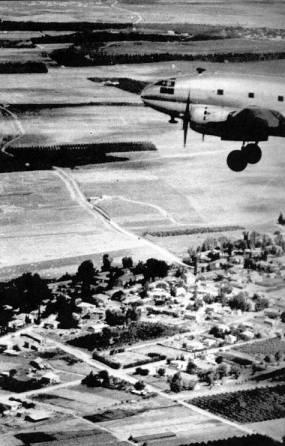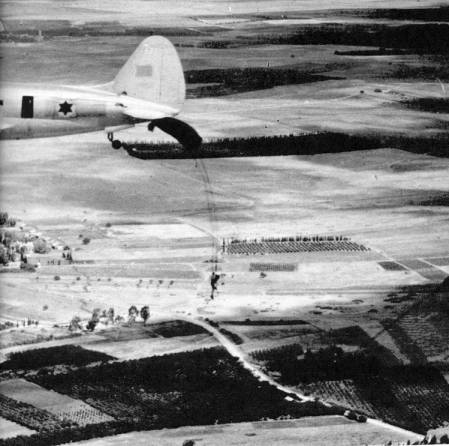 The Curtiss CW-20T, first flown on March 1940, was designed as a pressurized airliner but never actually went into civil production. At a time the U.S.A was approaching its entry into World War II, it's capacious fuselage attracted the interest of the military and from an initial order of 25 aircraft, by the end of the war 3,182 aircraft had been built. The type was used extensively by the U.S Air Force and Navy, most notably in the Pacific theatre. After the end of the war many military transports were put on sale and converted to civil use, some still flying today.
The Curtiss CW-20T, first flown on March 1940, was designed as a pressurized airliner but never actually went into civil production. At a time the U.S.A was approaching its entry into World War II, it's capacious fuselage attracted the interest of the military and from an initial order of 25 aircraft, by the end of the war 3,182 aircraft had been built. The type was used extensively by the U.S Air Force and Navy, most notably in the Pacific theatre. After the end of the war many military transports were put on sale and converted to civil use, some still flying today.Israel's Commandos were ex-U.S.A.F examples, the first five bought in December 1947 and another five bought a short time later, in order to ferry arms and suplies to Israel, then at the beginning of its War of Independance. At the time, the U.S administration had enforced an arms embargo on the opposing sides of the war and in order to bypass this embargo the planes were registered under a Panamanian airline. On April 10th 1948, the aircraft left the U.S for Panama, just five days before a presidential decree demandind any export of planes to be approved by the U.S Department of State came into effect. One plane was lost on the way to Panama, crashing upon takeoff in Mexico-City. Once in Panama, the aircrews continued to prepare for the flight to Israel, both in training and preparing the aircraft for the long haul. When the planes were ready, the aircraft left Panama and flew through Brasil and North Africa to Czechoslovakia, where Israeli agents had set up a base for cargo flights to Israel.
 The Commandos flew between Chechoslovakia and Israel continuesly, carrying supplies, arms and munitions. Their best known cargo was Israel's first fighter, the Avia S.199. One aircraft was lost when it hit a bridge near Ekron (Tel-Nof) AFB, also lost was half of an S.199 carried within. Another aircraft was grounded when it force-landed at Rhodes, Greece and was not allowed to leave until the end of the war. The Commandos also took part in various IAF operations such as "Avak" (Dust), carrying supplies to the besieged Negev and "Yoav", breaking the Negev siege and the conquest of Be'er-Sheva, during which the Commandos were used as bombers, with bombs hand-roled off the aircraft! During operatin "Avak" one parking aircraft was spotted by Egyptian Spitfires which tried to straffe it but failed to hit it completely. The aircraft was also used as a platform for paratroops (see picture).
The Commandos flew between Chechoslovakia and Israel continuesly, carrying supplies, arms and munitions. Their best known cargo was Israel's first fighter, the Avia S.199. One aircraft was lost when it hit a bridge near Ekron (Tel-Nof) AFB, also lost was half of an S.199 carried within. Another aircraft was grounded when it force-landed at Rhodes, Greece and was not allowed to leave until the end of the war. The Commandos also took part in various IAF operations such as "Avak" (Dust), carrying supplies to the besieged Negev and "Yoav", breaking the Negev siege and the conquest of Be'er-Sheva, during which the Commandos were used as bombers, with bombs hand-roled off the aircraft! During operatin "Avak" one parking aircraft was spotted by Egyptian Spitfires which tried to straffe it but failed to hit it completely. The aircraft was also used as a platform for paratroops (see picture).The aircraft were withdrawn from service shortly after the end of the War of Independance due to the high cost of thier maintainance, and were handed over to Israel's national airline, El Al.
 back to the IDF/AF page
back to the IDF/AF page